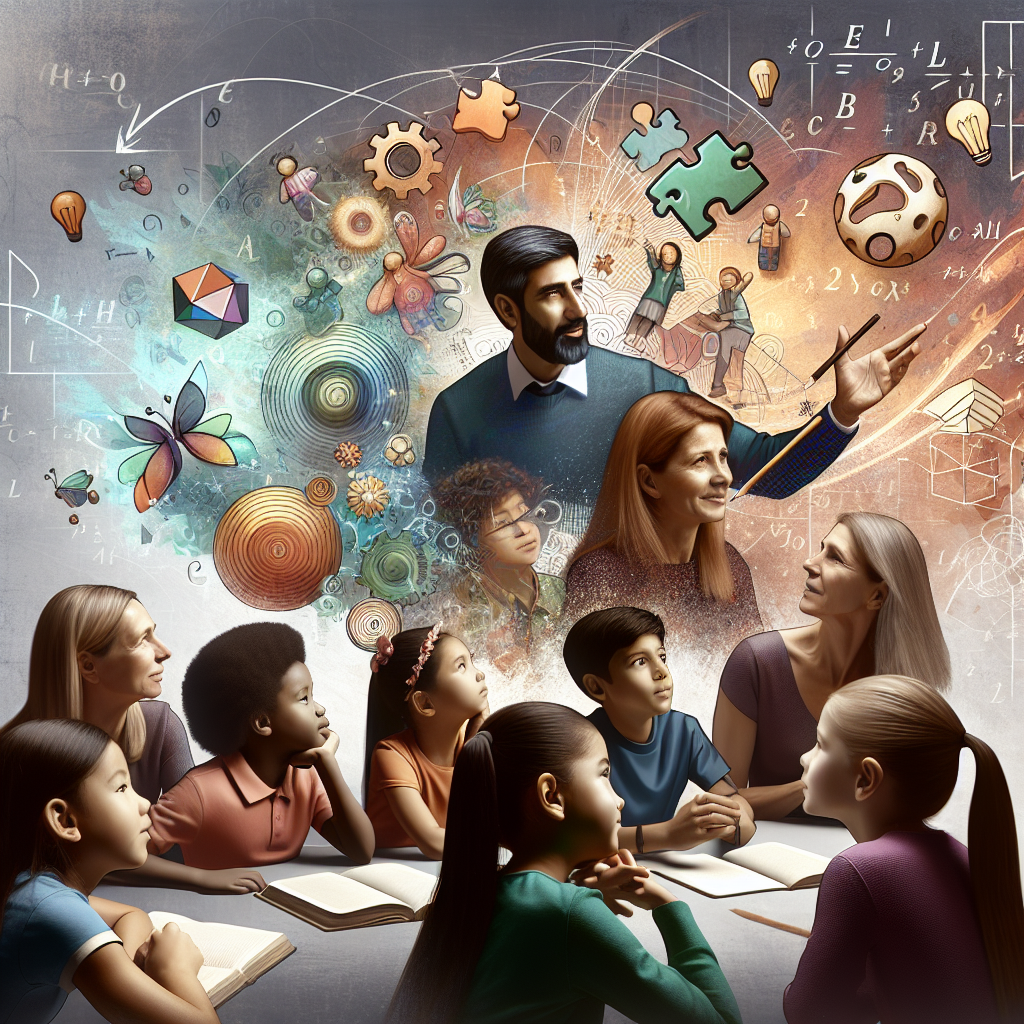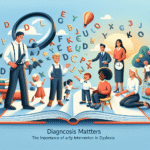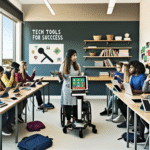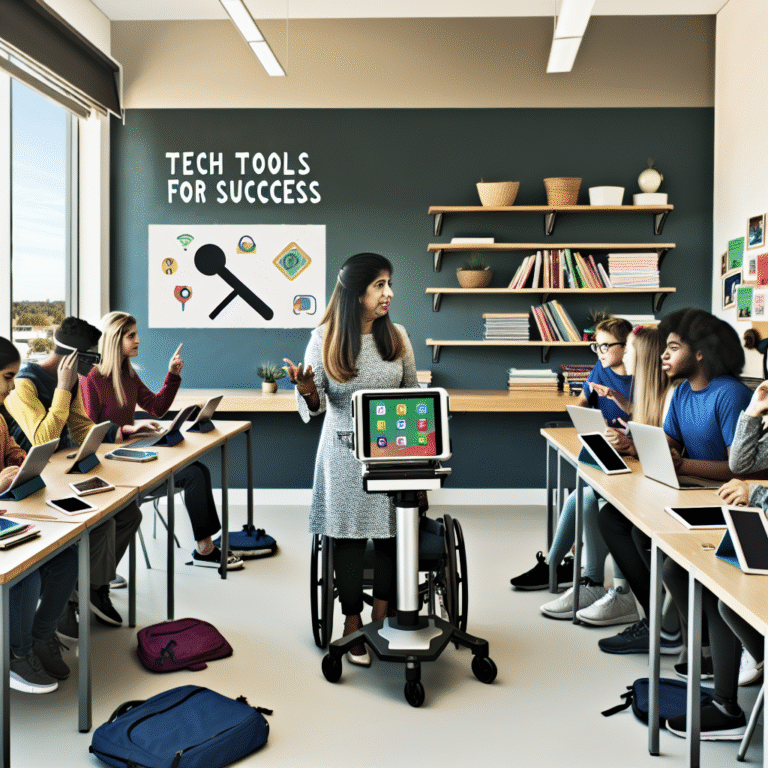
Navigating Learning Challenges: Proven Strategies for Educators Working with Learning Disabilities
Introduction
In today’s diverse classrooms, educators face the monumental task of addressing the wide array of learning needs among their students. Navigating Learning Challenges: Proven Strategies for Educators Working with Learning Disabilities is not just a mere necessity; it’s an imperative for fostering inclusive environments where all students can thrive. With approximately 1 in 5 children experiencing some form of learning disability, understanding how to effectively support these learners is crucial for educational success. The modern educator’s toolkit must be filled with innovative strategies, practical approaches, and an unwavering commitment to inclusivity.
Educators are tasked with not only imparting knowledge but also developing a supportive learning atmosphere that meets the individual needs of all students. This article will delve into effective strategies, real-world applications, and proven methodologies for helping educators navigate the complexities of learning disabilities.
Understanding Learning Disabilities
To effectively assist students facing learning challenges, it’s essential to grasp what learning disabilities are. A learning disability is a neurological condition that affects how the brain processes information. Common types include Dyslexia, Dyscalculia, and Dysgraphia. Often, these challenges are not indicative of a child’s intelligence; rather, they highlight the need for tailored teaching methods.
The Importance of Early Intervention
Research consistently shows that early intervention can make a significant difference in a student’s educational trajectory. For example, children with Dyslexia who receive specialized reading instruction significantly improve their reading ability, demonstrating that proactive measures can yield remarkable outcomes.
| Learning Disability | Definition | Key Characteristics |
|---|---|---|
| Dyslexia | Difficulty in reading, results from phonological processing issues | Problems with word recognition, decoding, and spelling |
| Dyscalculia | Difficulty with math computations | Struggles in making sense of numbers and mathematical concepts |
| Dysgraphia | Difficulty in writing, encompassing handwriting and spelling | Trouble organizing thoughts on paper, writing fatigue |
By familiarizing themselves with these types, educators can better tailor their strategies to meet the diverse needs of their students.
Proven Strategies for Navigating Learning Challenges
1. Differentiated Instruction
Differentiated instruction involves modifying teaching strategies to accommodate different learning styles. For instance, visual learners benefit from diagrams and charts while auditory learners may thrive with podcasts and discussions.
Case Study: A third-grade teacher noticed that several students struggled with a reading assignment. By providing one group with audiobooks and another with graphic novels, she observed improvements in engagement and comprehension.
Analysis: This case highlights how relevant it is to offer diverse learning materials. Differentiation not only boosts student confidence but also fosters a more inclusive classroom environment.
2. Multi-Sensory Learning Approaches
Multi-sensory learning taps into various senses—sight, sound, touch, and movement—to enhance learning. Techniques often include using manipulatives for math or incorporating storytelling and drama in lessons.
Table: Multi-Sensory Learning Techniques
| Technique | Description | Application |
|---|---|---|
| Visual Aids | Charts, diagrams, and images | Enhancing understanding of concepts |
| Tactile Activities | Hands-on tasks, building models | Supporting kinesthetic learners |
| Auditory Tools | Songs, rhymes, and discussions | Reinforcing auditory processing |
Case Study: In a fourth-grade classroom, a teacher introduced a multi-sensory approach by allowing students to use clay to form letters. This method resulted in a marked improvement in spelling skills.
Analysis: The active involvement in learning demonstrates that when students engage using multiple senses, retention improves, making these methods invaluable for educators navigating learning challenges.
3. Creating an Inclusive Learning Environment
An inclusive classroom atmosphere fosters acceptance and empathy among all students. Establishing respectful communication and promoting collaboration can significantly alter the dynamics of the classroom.
Strategies for Inclusivity:
- Encourage peer mentoring or pair-work.
- Celebrate individual strengths within the classroom.
- Train all students to be aware of and sensitive to each other’s challenges.
Case Study: A middle school implemented a buddy system that paired students with learning disabilities with their classmates. The outcome was higher social engagement and better academic performance for the students with learning disabilities.
Analysis: The buddy system illustrates how fostering peer relationships can ease the learning burden and enhance the classroom experience for all students, highlighting the importance of social interactions in academic settings.
4. Utilizing Technology
Technology offers remarkable resources for aiding students with learning disabilities. There are specialized software programs, apps, and devices designed to enhance learning efficacy.
Examples of Effective Technology:
- Speech-to-text programs can aid those with writing difficulties.
- Reading apps with adjustable settings help students at varying levels.
- Online math tools can simplify complex problems.
Case Study: A high school implemented reading software that allowed students with Dyslexia to listen to texts while following along. This led to increased comprehension and a noted decrease in frustration levels.
Analysis: Leveraging technology empowers students by providing them with personalized resources tailored to their needs, significantly enhancing their learning experience.
5. Collaborative Partnerships
Collaboration with parents, specialists, and support staff is vital in creating comprehensive support systems for students with learning disabilities. Engaging in constant communication enables educators to adapt strategies based on student needs effectively.
Example: IEP Meetings
Individualized Education Plans (IEPs) necessitate collaborative efforts. During these meetings, educators, parents, and specialists come together to craft a roadmap tailored to a student’s unique requirements.
Case Study: A school team collaborated to refine the IEP of a student with multiple learning disabilities. This collaboration resulted in heightened student achievement and increased communication between home and school.
Analysis: This case underscores the vital role of teamwork in education, showing how dedicated efforts can yield meaningful and lasting progress for students with learning disabilities.
Conclusion
Navigating Learning Challenges: Proven Strategies for Educators Working with Learning Disabilities requires intentionality, creativity, and collaboration. By implementing diverse strategies—such as differentiated instruction, multi-sensory approaches, and incorporating technology—educators can unlock the potential of each student in their care. Ultimately, the goal is to foster a compassionate, inclusive environment where every learner feels valued and empowered.
Leaning into these proven tactics will not only improve academic outcomes for students with learning disabilities but also create a classroom atmosphere filled with respect, understanding, and collaboration. As educators, embracing challenges and innovating solutions are crucial to leveling the playing field for all learners. The road ahead may be complex, but with the right strategies at hand, we can inspire and uplift every student to reach their fullest potential.
FAQs
1. What are the most common learning disabilities?
Common learning disabilities include Dyslexia, Dyscalculia, and Dysgraphia. Each impacts a student’s ability to read, compute numbers, or write, respectively.
2. How can educators effectively identify students with learning disabilities?
Educators should look for signs such as difficulty with reading comprehension, trouble with numbers, or challenges in organizing written work. Collaborating with special education teachers can also aid in identification.
3. What role does technology play in supporting students with learning disabilities?
Technology provides access to tools that can assist with reading, writing, and math, tailoring learning experiences to individual needs. Examples include voice recognition software and educational apps.
4. How important is parental involvement in supporting students with learning disabilities?
Parental involvement is crucial. Engaging parents in discussions about their child’s needs and progress fosters a supportive home environment that complements classroom strategies.
5. What should I do if I suspect a student has a learning disability?
If you suspect a learning disability, communicate your observations to the school’s special education team. They can guide the assessment process and collaborate on interventions.
6. Are there specific teaching methods that are particularly effective for students with learning disabilities?
Yes! Methods like differentiated instruction, multi-sensory learning, and collaborative learning can significantly benefit students with learning disabilities, catering to their diverse needs.
By understanding and employing these strategies, educators can successfully navigate the complexities of learning challenges, ensuring that all students have the opportunity to thrive. Each child’s journey is unique, and with dedication and the right approaches, educators can make an impactful difference.









